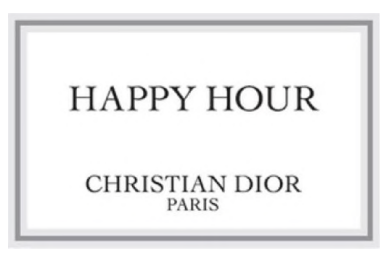The house mark is a concept from the field of marketing that has been appropriated by trademark law.
It is a single mark used by a company to market its ranges of goods and services, making it easier for consumers to recognize their origin.
Although tempting from a marketing point of view, the presence of your house mark within a composite trademark in order to differentiate it from other marks is not always an effective solution, as is clear from the consistent case law set out below.
In 2005, in a case involving a first trademark LIFE and a second mark THOMSON LIFE, the Court of Justice of the European Union (CJEU) held that there was a likelihood of confusion between these marks, on the grounds that ‘It is by no means excluded that, in a particular case, an earlier trademark used by a third party in a composite sign which includes the name of that third party’s company name retains an autonomous distinctive position in the composite sign without, however, constituting the dominant element thereof’. Consequently, ‘for the purposes of finding a likelihood of confusion, it is sufficient that, because of the independent distinctive position retained by the earlier mark, the public also attributes to the proprietor of that trademark the origin of the goods or services covered by the composite sign’ (CJEU, 6 October 2005, C-120/04, Thomson life, § 30 and 36, free translation).
In 2014, the CJEU clarified the concept of autonomous distinctive position, stating that ‘an element of a composite sign does not retain such an autonomous distinctive position if that element forms, with the other element or elements of the sign, taken together, a unity which has a meaning different from the meaning of those elements taken separately’ (CJEU, 8 May 2014, C-591/12, Bimbo §25, free translation).
This praetorian rule of ‘autonomous distinctive position’ was recently applied again in 2023. In assessing the similarity between the trademarks DIVINE and GAULTIER DIVINE, which covered identical goods, the Paris Court of First Instance held that ‘the absence of any combination of meaning between the two words [GAULTIER] and Divine, the predominant emphasis placed on Divine in the contested representations in evidence, its intrinsic distinctive power and the fact that [GAULTIER] is also an house mark mean that the word [DIVINE] retains an autonomous distinctive position in the sign. But the earlier mark and this sign with an autonomous distinctive position are identical’. The Court therefore concluded that the trademarks DIVINE and GAULTIER DIVINE are indeed similar, making the addition of the well-known name ‘GAULTIER’ ineffective in ruling out the likelihood of confusion (TJ Paris, 1 December 2023, 23/11158, Gaultier Divine, §44 and 45, free translation).
On the other hand, when comparing the trademark UN RENDEZ-VOUS with the earlier mark LES RENDEZ-VOUS DE BILLECART-SALMON, (BILLECART-SALMON being the house mark of the owner), the NIIP considered that ‘the earlier mark, taken as a whole, forms an expression with its own meaning, in that it refers to appointments in particular, namely those of Billecart-Salmon, whereas the contested sign designates the notion of appointments in a general way. (…) In addition, the term RENDEZ-VOUS appears blended into an expression having a particular meaning, as noted above”. The Institute concluded that there was no likelihood of confusion between these trademarks, as the house mark was placed within a sign which, taken as a whole, has a meaning (INPI, 23 October 2023, OPP 23-1695, free translation).
In addition to the concept of an ‘autonomous distinctive position’, the French and European Union authorities tend to consider that the presence of an house mark within a composite mark is not in itself such as to rule out the similarity of the signs.
Thus, when examining the marks LONGINES DOLCE VITA and LA DOLCE VITA, the EUIPO held that the signs were similar, stating in particular that ‘the differences between the signs are not significant enough to eliminate this risk, considering that the earlier mark’s ‘Longines’ may simply be perceived as the opponent’s house mark (…)’ (EUIPO, March 20, 2025, Opposition No. B 3 192 490).
Similarly, to affirm that the words ‘HAPPY HOUR’ in the composite trademark  are essential in that mark, the NIIP considered that ‘the words CHRISTIAN DIOR are presented on lower lines and in smaller characters, and are likely to be perceived as an “house” mark. The fact that the CHRISTIAN DIOR elements may be well-known, as relied on by the applicant, is not such as to rule out this perception; on the contrary, it supports the understanding of these elements in the aforementioned sense’. The Institute therefore concluded that the sign HOPPY HOUR COSMETICS is similar to Christian Dior’s trademark HAPPY HOUR (INPI, November 4, 2021, OPP 21-0826, free translation).
are essential in that mark, the NIIP considered that ‘the words CHRISTIAN DIOR are presented on lower lines and in smaller characters, and are likely to be perceived as an “house” mark. The fact that the CHRISTIAN DIOR elements may be well-known, as relied on by the applicant, is not such as to rule out this perception; on the contrary, it supports the understanding of these elements in the aforementioned sense’. The Institute therefore concluded that the sign HOPPY HOUR COSMETICS is similar to Christian Dior’s trademark HAPPY HOUR (INPI, November 4, 2021, OPP 21-0826, free translation).
In both of these cases, these decisions were favorable to the owners of the composite trademarks that included their house tmark which, fortunately, were earlier. However, if these composite marks had been later, the presence of the house mark would not have ruled out the likelihood of confusion.
Conclusion
While the addition of an house mark to a composite sign may in practice reduce the risk of claims by owners of earlier trademarks, it does not eliminate all risk of confusion and therefore all legal risk.
The LAVOIX team remains at your disposal to advise you on the protection of your trademarks.

